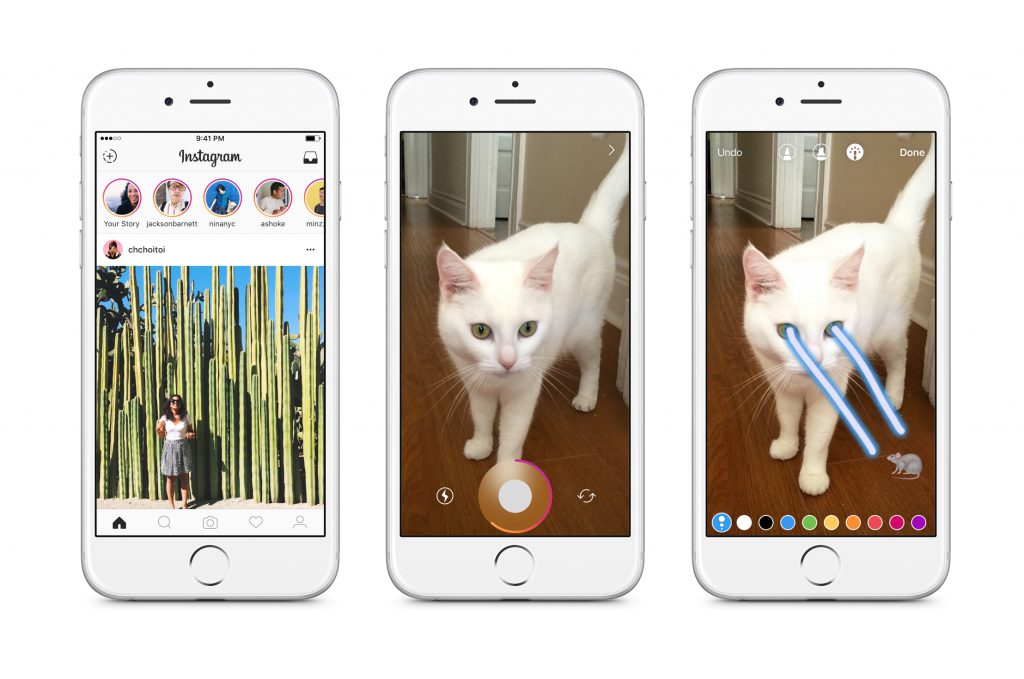For years, marketing experts have been discussing the importance of video in content marketing. In 2005, YouTube was launched. Today, it is the 2nd most visited website in the world and a key platform in reaching demographics from GenZ to Baby Boomers and nearly everyone in between.
One year ago, Facebook’s Mark Zuckerberg said that the future of the platform was video. Facebook followed this announcement with huge investments in Facebook Watch and Instagram TV, encouraged the continued use of video in ads and pushed the adoption of ephemeral videos within the Facebook stories feature.
These growing platforms and their influence on video marketing is not a surprise, given that video consumption is expected to make up more than 80% of all internet traffic by 2021. Video content is easy to consume and resonates with today’s on-the-go consumers. 90% of customers say video helps them make buying decisions, while 64% of customers say that seeing a video makes them more likely to buy.
So where is video headed in 2019? Read on for our top 10 video marketing trends for this year.

(Source: Instagram)
Trend # 1: The continued rise of video in Stories
As of January 2019, Facebook reported that there are now more than 400 million people viewing Instagram Stories daily. This number is up from 250 million people in June 2018. The feature is highly engaging and effective at reaching consumers in the 13-34 age group.
Based on the growing influence of Stories and the declining reach of newsfeed ads, Facebook expects Stories to drive video ad spend on the platform to double in the next year. Facebook Stories may have been slower to catch on, but the platform now boasts 1 billion shares every day.
When asked about the growth of Stories as an advertising placement, Mark Zuckerberg said, “I’m optimistic that we’ll get ads and Stories to perform as well as Feed over time… and that the opportunity will be even bigger, because it looks like Stories will be a bigger medium than Feed has been.”
Marketers should pay attention any time Facebook announces they are making an investment in a tool or feature. This typically means it will become a bigger piece of the marketing mix in the future.
Trend #2: The declining cost of video production

Source: Small Business Trends
For years, video has been best utilized by big brands and businesses with the budgets and production capabilities to create it. Smaller businesses and teams have struggled, citing the cost and time required to build video assets as the primary challenge in using video more (State of Social Video for 2018).
Despite resource challenges, many marketers did try to experiment with video for the first time in 2018. Most plan to incorporate more video into their marketing in 2019, citing shortened production timelines and ease of in-house creation as reasons why they will be able to use more video in their 2019 marketing strategies (HubSpot).
The rise of ephemeral, less production-heavy video and new tools have made it easier than ever to make and share video. One example is the video creation kit from Facebook, which allows users to create mobile-first video ads that use your existing photo assets, text overlays, and logos.
Trend #3: Consumers will want to see a more educational & informative video

Source: Small Business Trends
The influence of TV advertisements is giving way to a consumer desire for more informative, educational video. According to the State of Video Marketing by HubSpot, 39% of consumers want to see more ‘explainer videos’. This type of content is highly effective on social video platforms like YouTube.
While marketers often think of this type of video as boring, it is helpful in making purchase decisions and understanding how to use products. 52% of consumers say that watching product videos makes them more confident in online purchase decisions (Invodo).
Trend #4: Video formats will continue to diversify

Source: MDG Advertising
As mobile usage has grown, so has the call for adopting vertical video – with many marketers calling it a ‘non-negotiable for modern viewers’. However, consumers don’t seem to be as concerned with this trend.
60% of our respondents told us they’d flip their phone horizontally to take a video on their phone, and 75% told HubSpot that they would actually prefer to watch a video horizontally. What does turn off viewers is watching a video that isn’t optimized for the platform they are on – 82% were irritated by video that wasn’t optimized to watch horizontally or vertically (HubSpot).
For brands to succeed in 2019, they will need to optimize their video content both for the platform and the delivery format. Marketers should consider the consumer, and all of the places they may see the content and then create the video for that specific use.
Trend #5: Social Media will become more video focused
As we mentioned in the introduction to this post, Mark Zuckerberg explicitly said that he believes the future of both Facebook and Instagram lies in video. But he isn’t the only one saying this. Marketers only have to look to where consumers hang out to see that social media is a critical distribution tactic for video.
Currently, 49% of consumers connect with branded videos on Facebook, 32% on YouTube, 24% on Instagram, 22% on Snapchat and 22% on Twitter (Forbes). Social video also generates 1200% more shares than text and images combined.
For brands, succeeding on social media in the coming years may increasingly depend on their ability to create and share video on the platforms.
Trend #6: Video will become more searchable
At the end of 2018 Google announced that it will start showing relevant video clips in search results with its Featured Video card. This feature will play only clips of a video that are directly relevant to the user’s search results.
While Google has long realized the importance of video (they acquired YouTube in 2006), new technological advances in artificial intelligence are making it possible for the search engine to provide even more relevant videos to consumer searches.
Embrace the trend of searchable video by uploading your videos to YouTube (videos are 53 times more likely than traditional web pages to receive an organic first-page ranking). If you haven’t delved into YouTube yet, it’s time to think about your strategy on that platform.

(Source: The Next Web)
Trend #7: Video will become more shoppable
Social media platforms are investing heavily in understanding shopping behaviors in order to build native shopping, checkout and advertising placements (AdWeek). At the same time, brands are experimenting and embracing video as part of the buyer’s journey. Video on an e-commerce product page is shown to increase order value by at least 50% and 96% of consumers find video helpful in making a purchasing decision.
Brands don’t need to wait for social platforms to figure out shopping features. New technology in video production makes it possible to add interactive touch points in any video – allowing your audience to learn more, shop or get in touch. Smart marketers are testing ways to give video viewers the ability to ‘swipe to buy’ now so they are ahead of the pack when these features become mainstream.
Trend #8: Video will become interactive
Interactive video drives engagement by giving the viewer the ability to interact and even control video content as if playing a video game. All of the major content platforms are embracing this trend including Netflix’s choose your own adventure style of the popular show, Black Mirror: Bandersnatch, in December of 2018. YouTube is also experimenting with interactive advertisements as well as original programming.
Brands have started building interactivity into their videos, such as this example from Ted Baker and this music video from Major Lazer. If your brand is ready to get started with interactive video, but you aren’t sure where to start, there are several solutions (including Wire Wax and Hello Eko) that can help.
Trend #9: Use of Cinemagraphs & Gifs in Advertising

Source: Bold Content
It isn’t always necessary to build a full video to create the effect of movement. Cinemagraphs and Gifs offer a way to add movement to an image without the full production of creating a video asset. A cinemagraph is a photo and video hybrid which contain a subtle motion that plays on a seamless loop while the rest of the image remains still. An animated gif has a sequence of multiple frames encoded into a single image file.
These animations are particularly useful in driving conversions from Facebook ads, where video creative is optimized at a lower CPC but doesn’t typically convert as well as image ads.
Trend #10: Increase in video ad spend
In 2018, brands spent over $90 billion dollars on video ads. According to a recent Forrester report that number is expected to rise to $102.8 billion by 2023. Growth in video consumption and advancements in analytics have made video a key component to any online advertising strategy.
As more marketers adopt video and test new delivery formats, we can expect competition for video ads to increase. Brands are expected to adopt more vertical, bumper (short, pre-roll ads) and non-skippable ad formats in their strategies.
These 10 trends all reinforce the importance of video in marketing and the expected growth of the medium in years to come. Whether you are new to video or a seasoned veteran, it’s time to assess your video strategy and see where you may be falling behind. What trends do you see happening with video? Are there any we didn’t include?
Looking for more?! Check out all of our latest insights into Video and be sure to register soon for one of our upcoming in-person or virtual social media marketing conferences!









